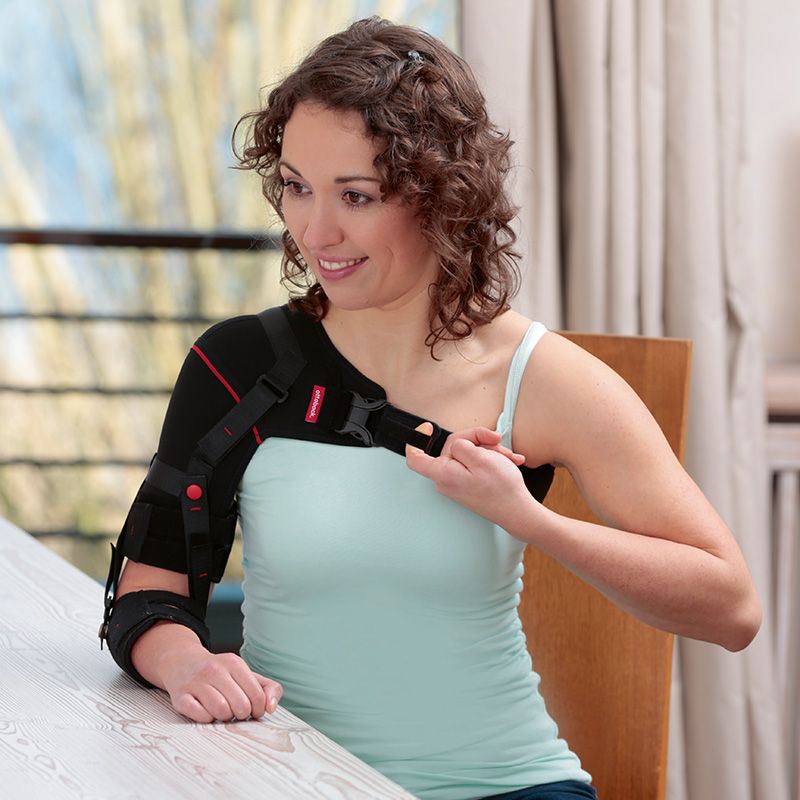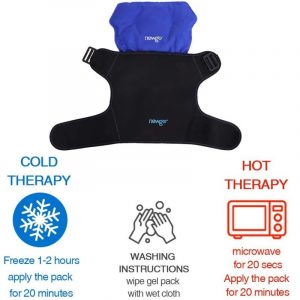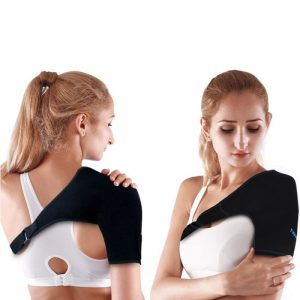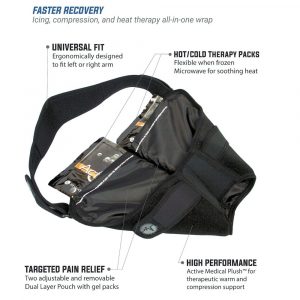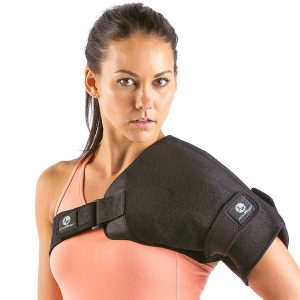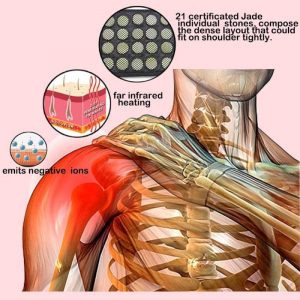Shoulder Braces For Support, Stabilization & Pain Management
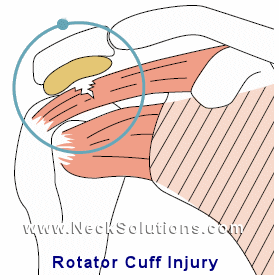 These supports can be an effective way for dealing with shoulder strain pain and restricted motion from a sports injury, work related injury, or to help with everyday daily life activities. We have discussed restoring function and range of motion through shoulder exercises and muscle therapy for helping to heal rotator cuff tears without surgery.
These supports can be an effective way for dealing with shoulder strain pain and restricted motion from a sports injury, work related injury, or to help with everyday daily life activities. We have discussed restoring function and range of motion through shoulder exercises and muscle therapy for helping to heal rotator cuff tears without surgery.
Using shoulder braces can help get through the rough times. They can also provide warmth and comfort to help ease shoulder pain. Some of the more non restrictive shoulder braces can serve as a reminder to use the good arm. As we have discussed, healing from an injury requires an initial period of rest. This may include immobilization as the tissues need to heal properly and further injury may complicate this process.
Basic braces use an elastic type of fabric which stretches and are very good options for individuals who require comforting support. These types of shoulder braces can be comfortably worn for extended periods. Moderate level support is best for those who need increased support. While not as giving as the more elastic supports, they can be more beneficial for sports injuries or higher levels of tissue damage. When serious injuries occur or after surgery, the shoulder may need to be immobilized, therefore, high levels of support are required.
Types Of Shoulder Braces
Because there are so many different braces available on the market today, choosing one can be a difficult process. Some sites offer literally dozens of choices, making the process more confusing. At NeckSolutions, our goal is to provide a select choice of very high quality braces that are suitable for minimal, moderate and high levels of support.
Measuring can also be confusing. There are many different body types and many different measuring methods. We will provide supports that offer a simple means to measure so you get it right the first time. There is nothing more frustrating than having to wait to exchange shoulder braces because the measuring process was too complicated or not specific enough.
Braces are used according to the type of injury and level or angle of support required. Some injuries and shoulder problems require that the shoulder be held out at an angle away from the body, this is called abduction. Varying degrees of abduction may be necessary for stabilization of specific operations or at a level in which pain relief is obtained. Other shoulder problems will require that the shoulder be held more stable in degrees or levels of the arm pointing inward or internal rotation.
So, it is important that you are aware of the position that best affords relief of pain or that your doctor has given a specific direction to which of the braces you need. Often this is easy to determine for someone who has a shoulder strain simply by noting which position your shoulder feels better. At times, a specific direction and degree is specified by the doctor according to the surgical repair and intended healing process, for example, an immobilizing shoulder brace, abduction at 30 degrees.
Shoulder pain is a common complaint. [1, 2] The yearly incidence of the condition in primary medical settings is estimated to be about 20 per 1000 individuals.[3] In the general population, the prevalence is between 20 to 33% and it may have a significant impact on work productivity and healthcare expenses. [4, 5] Those suffering chronic shoulder pain have alterations in joint mobility and biomechanical dysfunctions affecting the hip and lower limb. [6]
1. Case Reports Pain. 2003 Mar;102(1-2):167-78.
2. Shoulder Elbow. 2015 Jan;7(1):49-59.
3. Man Ther. 2008 Oct;13(5):426-33.
4. Aust Health Rev. 2019 Oct;43(5):540-548
5. BMJ Open. 2019 Mar 20;9(3):e022006
6. Gait Posture. 2022 Feb 13;93:183-190
